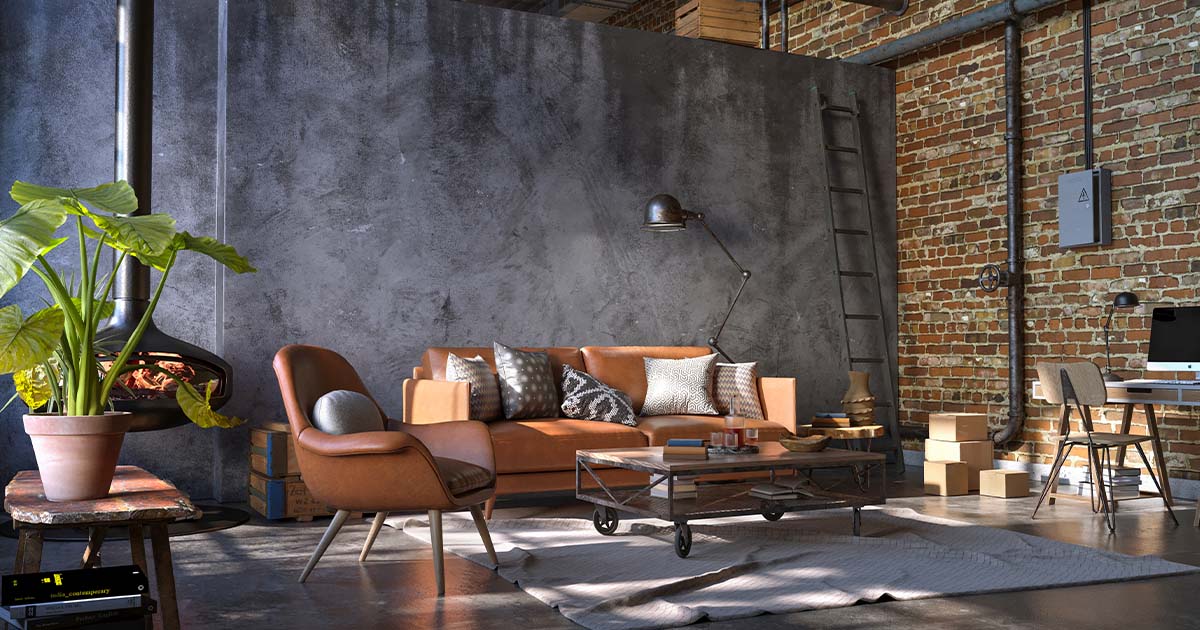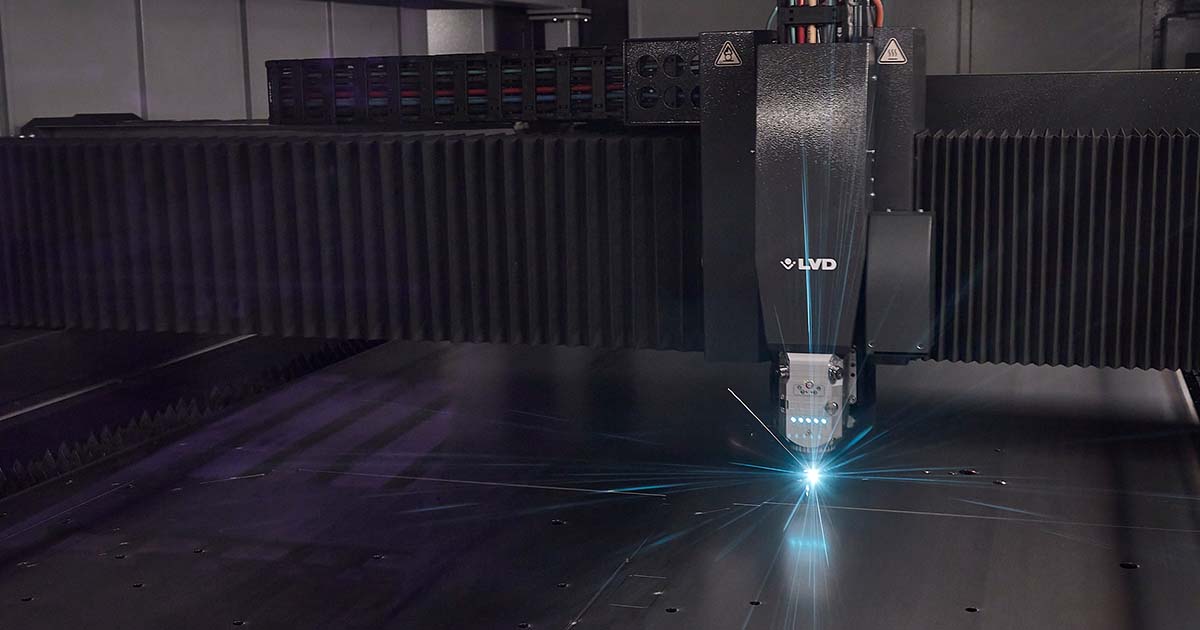
We collect basic website visitor information on this website and store it in cookies. We also utilize Google Analytics to track page view information to assist us in improving our website.

Our clients have various industrial needs, and we proudly and expertly fulfill them, fueling industries with top-tier laser-cutting services.
But laser cutting’s capabilities don’t begin and end with purely functional components – they extend to artistic pieces as well.
Laser-cutting and engraving furniture is one such example.
Of course, we all need furniture. Or else we’d have to sit, sleep, and work on the floor. But furniture also makes an aesthetic statement. You communicate who you are, your values, and much more with your furniture, whether for your home or public-facing business.
Laser cutting is what gives many pieces of furniture their unique “look.” In this blog post, we’ll examine industrial laser cutting and its role in furniture manufacturing. Our primary focus will be metal, but note how laser cutting can be done to wood, leather, upholstery, plastic, glass, and acrylic.
At Amber Steel, we specialize in laser, plasma and flame cutting, and have always been a "total source" service for the production of quality steel products. Quality is achieved by utilizing the right production technique for the right product. Our continual investment in equipment and technology enables us to offer clients many production alternatives to achieve exact product specifications and tolerances. If you’re interested in learning more about steel cutting or have a project in mind that you would need our expertise on, do not hesitate to reach out. We’re always one email or phone call away.
Here are the three main types of laser cutting in furniture making:
CO2 Lasers use an electrically-stimulated gas mixture containing carbon dioxide.
Cutting, boring, and laser engraving furniture materials like acrylic, glass, wood, plastic, and fabrics are the typical use cases for these lasers.
While cutting thicker materials, CO2 lasers provide heightened power and efficiency.
They’re not as effective when cutting metals.
Fiber Lasers utilize fiber-amplified seed lasers to create laser beams. These beams have wavelengths 10x less than a C02 laser’s.
These are best suited to aluminum, steel, copper, brass, and other metals.
Marking and engraving applications are further use cases.
Energy efficiency is a massive selling feature of fiber lasers, outperforming CO2 lasers in this avenue. They also last longer than CO2 lasers, and necessary maintenance efforts are comparatively minimal.
All thick to medium-thick metals are best suited to fiber lasers.
Nd:YAG/Nd:YVO (Neodymium) Lasers use crystals as their laser-generation medium.
Nd stands for Neodymium.
YAG/YVO represents the crystal host (Yttrium Aluminum Garnet or Yttrium Orthovoandate).
These lasers are used for metal and non-metal materials, speaking to their versatility. Welding, deep engraving, and other high-power applications are common use cases.
High power and flexibility are critical advantages. Still, these benefits lend themselves to low efficiency and heightened running costs, especially compared to fiber lasers.
Laser-cutting furniture and laser engraving are the two ways laser cutting fits into furniture manufacturing. Laser cutting produces clean cuts, while laser engraving, like embossing, involves non-penetrating processing incorporated – typically – into text engraving and patterns.
Below, we’ll detail how laser cutting and furniture design intertwine in specific applications and examples:
Precise joints and connectors in metal are enabled by laser-cutting. These ensure a piece of furniture’s structural integrity, whether a sofa’s metal frames, shelving units, or tables.
When laser-cut for precise fit and function, custom-designed metal brackets and hinges add robust sturdiness and eye-catching aesthetics to multiple furniture types.
Want to enhance a functional piece of furniture with an artistic flourish? Add ornamental accents in the form of metal pieces featuring laser-cut designs.
The surfaces of a piece of furniture’s metal component can be textured through laser cutting, offering a dynamic, eye-catching aesthetic.
The precision of laser cutting is ideal for creating interlocking metal parts for flat-pack or modular furniture, often purchased for its seamless assembly and disassembly.
Server cabinets, media consoles, and other such pieces can be adorned with laser-cut metal grilles for optimal ventilation and stylish decoration.
Desks and entertainment units often require precise openings for optimal cable management, which laser cutting can provide to bolster form and function.
Furniture can be utilitarian and merely serve a functional purpose. At the end of the day, if it’s comfortable and it fits a given space, it’s getting the job done.
Yet, furniture is so much more than the purpose it serves. Yes – function is crucial. A piece of furniture that’s all form can’t offer comfort or benefit anybody.
It’s all about function and form meeting in the middle. The happy medium.
Design features through techniques like laser-cutting metal elements take high-functioning furniture to a new and exciting place. The precision, craftsmanship, and artistic value meld as one, yielding pieces that stand far above the rest.
With the advent of industrial laser cutting, we've seen a revolution in the creation of functional art. Laser technology allows for precise, intricate designs that were once impossible or too costly to produce.

But what exactly does it mean to say that furniture is a ‘functional art’?
We all know that art doesn’t need to be functional. Someone can sell you a squiggly line on a piece of paper for five or six figures, and nobody will bat an eyelid if a hint of artistic technique is involved. But that little squiggly line isn’t doing much besides squiggling.
On the other hand, not all furniture is artistic. We used the term utilitarian in the previous section, which fits much of what’s available nowadays. It exists solely for practical reasons (e.g., storage, sitting, working).
People have to see their furniture every day, though. Whether at home or the office, we’re surrounded by this decor. We're left with the sense that something’s missing – a sense of emptiness – when it lacks personality beyond its practical purpose.
Enter the idea of functional art. Blending aesthetics with utility. You’re making a statement while “getting the job done.” You’re eliciting an emotional response while offering a practical usage.
None of this is to say that ‘practical’ furniture isn’t at all artistic. However, it’s less intentional than the types of pieces we’re discussing.
Undoubtedly, you can find a minimalistic – primarily practical – chair that jives with everything in your living room. But it’s not existing to stand out; it’s more there to blend in.
The evolution of technology and shifting cultural tides have made artistic future more widely available. For instance, creating intricate artistic furniture designs with laser cutting is far more streamlined than without. Beforehand, it was too challenging and expensive to make in mass, easily accessible volumes.
Moreover, design software advancements give designers a canvas for experimenting with complex structures and shapes. Laser cutting technology complements these advancements, offering unparalleled precision and versatility in material cutting. They’re empowered to push boundaries and reach new heights as they design more ambitious pieces of functional art.
Pieces of ‘functional art’ furniture are also easier to buy and sell than ever.
Thanks to mass production and the global marketplace, designers can bring their grandest visions to life at a profit – and laser cutting helps make that happen. By enabling intricate and complex designs, laser cutting has become an indispensable tool in the modern furniture manufacturing process, contributing significantly to the evolution of functional art.
Here’s a breakdown of how laser-cutting furniture is the pinnacle of functional art:
With laser cutting, precision and complexity always shine through. This notion holds true for “functional art” furniture pieces due to the precision of cuts that enable intricate design and pattern creations, eclipsing what’s achievable by hand.
Laser cutting offers design customization and personalization capabilities, allowing manufacturers to tailor cuts and fits to provide aesthetic harmony, panache, and functional benefits.
Experimentation and innovation with different textures, layering techniques, and patterns are encouraged by laser cutting, which works with many materials, expanding furniture designers’ palettes.
Laser cutting promotes sustainability due to its precision, mitigating material wastage. Modern furniture manufacturing must prioritize sustainable design principles to offset the constant strain on our environment in these times.
Technologists, artists, and designers in the furniture industry can more seamlessly collaborate when laser cutting is utilized due to the technique’s ease and precision. Combining more great minds will yield superior standout pieces with elevated form while maintaining optimal function.
Amber Steel is an expert in the laser cutting space. We’re well-versed in laser-cutting techniques that generate gorgeous pieces of furniture of heightened form and top-tier function.
Contact us today to learn more about what we can do for your furniture pieces. It’s time to embrace and leverage the benefits of functional art.